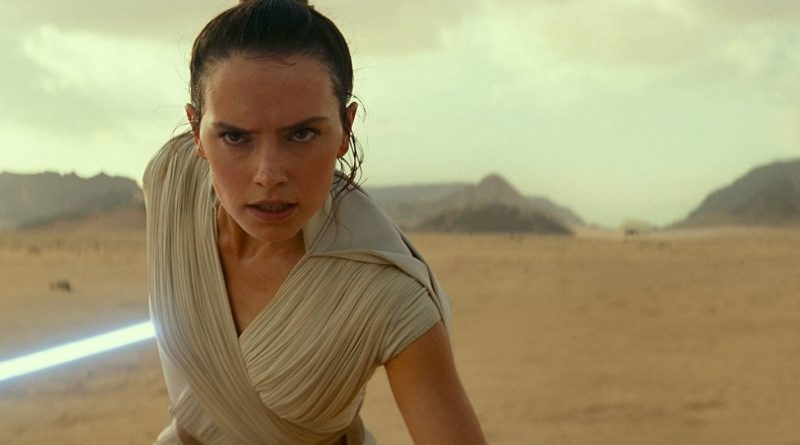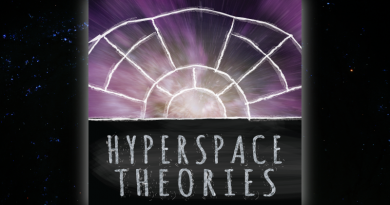The Failures of The Rise of Skywalker, Part 6
The fundamental problem with The Rise of Skywalker is simple: a disappointing but not terrible movie finishes the Sequel Trilogy. Ironically, a terrible movie would be easier to deal with. Fans could roll their eyes, laugh it off, pretend it never happened (and anticipate future stories which will ignore that it happened), and not feel any compulsion to spend time or energy analyzing and critiquing it. A disappointing concluding installment, by contrast, cannot be dismissed or forgotten. Precisely because it could have been better – because it contained the salvageable seeds of a stronger and more worthy story – the need to analyze and critique it becomes all the more important. The Star Wars franchise and its fans deserve better than disappointment.
This post is the sixth and final one in our series The Failures of The Rise of Skywalker. Its focus is analyzing the big-picture flaws in the movie. In doing so it builds upon and synthesizes points made in the earlier posts, which focus on the arcs and themes of the story’s key characters. But the emphasis in this post is on the themes and storytelling for the movie as a whole, and for the Star Wars franchise. On that level, too, The Rise of Skywalker should have done better.
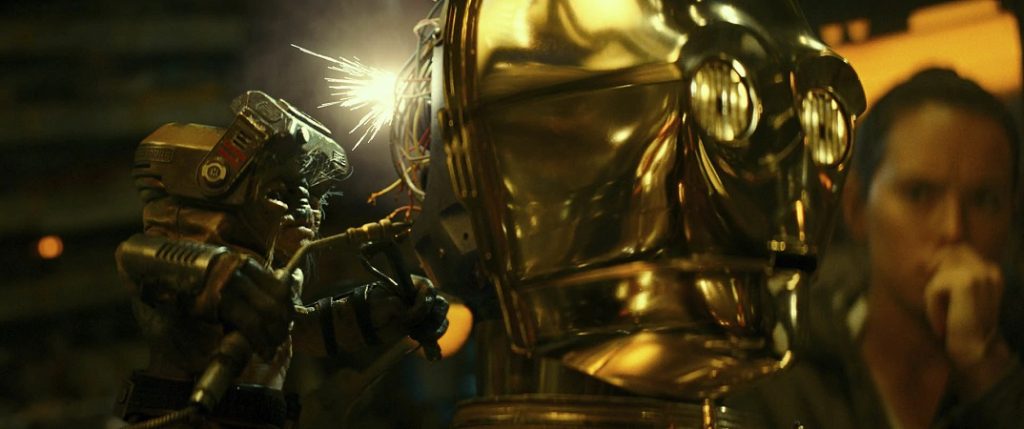
The Strengths and Weaknesses of The Rise of Skywalker
For all its faults, there is a lot to like in The Rise of Skywalker. The cast is full of incredible talent, and they all deliver top-notch performances. The dialogue zings with witty banter, especially during the hero trio’s adventure during the first ninety minutes or so. Threepio has never been funnier – or more emotionally moving. The visuals are stunning and gorgeous, and the sets and costumes hold their own with any prior Star Wars films. As always, ILM and Skywalker Sound deliver contributions that make the galaxy far, far away feel as authentic and present as a movie taking place in our real world. As a spectacle of space opera entertainment, The Rise of Skywalker rises to the challenge.
But all these good qualities only serve to emphasize why it is so important to hold Lucasfilm accountable for the ways in which The Rise of Skywalker falls short. Any number of faults in a Star Wars movie can be forgivable – every single one of the other films has them, to varying degrees of fandom notoriety – but flaws in the story cause the most enduring harm. Fans may roll their eyes at a farting eopie or hyperspace travel at the speed of plot, but Padmé dying from losing the will to live is a decision that still stings fifteen years later.
For The Rise of Skywalker, the origin of many – not all – of the film’s failures is the production process itself. J.J. Abrams had three fewer months to write, film, and finish The Rise of Skywalker than he did for The Force Awakens five years earlier. In a variety of ways, and especially in the third act, Episode VII had undeniably suffered from a rushed creative process. It is no surprise that similar issues recurred in Episode IX on a shorter clock.
But much of that struggle for Episode IX ought to have been avoidable. After all, Episode VII was a clean slate, and its development process involved not merely writing and filming a compelling Star Wars movie, but also making storytelling and world-building decisions that would inextricably shape, guide, and constrain the entire Star Wars franchise for any other content taking place after Return of the Jedi and before The Force Awakens. Episode IX, on the other hand, is the conclusion of the trilogy. In that role, it should be primarily wrapping up character arcs and storylines, paying off ideas set up in the previous films in a satisfying way.
It is well known by now, though, that Lucasfilm did not approach the trilogy as a unified storytelling endeavor. Rian Johnson was writing Episode VIII before Abrams had finished Episode VII; Disney CEO Bob Iger read a completed draft of The Last Jedi the day of The Force Awakens world premiere. Colin Trevorrow’s ideas for Episode IX reportedly clashed with Johnson’s on significant issues, leaving Abrams and Chris Terrio to start over when they came aboard. This lack of planning and storytelling vision for the Sequel Trilogy compounded the rushed timetable of production. Under those circumstances, it is hardly surprising that The Rise of Skywalker ended up as a movie with significant flaws.

Letting Down the Female Leads – Again
One of the original purposes of FANgirl Blog was the need to give voice to critiques of the way the Star Wars franchise handles its most important female characters. A decade ago, the ongoing failures involved the Expanded Universe (now Legends) stories – Jaina Solo, Mara Jade, Leia Organa Solo, and more – as well as the persistence of Slave Leia and other detrimental messages in toys, collectibles, and other merchandise. Lucasfilm had the opportunity to learn from these mistakes, as well as the flaws in how Leia’s and Padmé’s stories ended in their respective movie trilogies, to do better in future stories. Unfortunately, The Rise of Skywalker continues Lucasfilm’s pattern of letting down its female leads in the way their stories end.
Rey heroically wins the day, her defeat of Palpatine saving the Jedi and the Resistance from the Sith and the Final Order. But her character arc in her third film is plagued by flaws that Star Wars avoids with its male leads. Though she is the central character, Rey has less agency in her culminating movie than Luke or Anakin. Her motivations for key choices in the film are unclear or absent. After facing off with Kylo Ren as her nemesis for two-and-a-half films, she inexplicably heals him from the mortal wound that ended their final duel. Despite abduction, torture, stalking, and persistent attempts to turn her to the dark side across three movies, their story ends with her kissing him – a deeply troubling thematic message to include in a Star Wars film. Even worse, that conclusion was not preordained or guaranteed. Maryann Brandon, longtime editor for J.J. Abrams (including Alias, Mission Impossible III, Star Trek and Star Trek Into Darkness, as well as The Force Awakens and The Rise of Skywalker), has admitted in recent interviews that multiple versions of those final moments – with and without any kiss – were filmed and considered during the editing process. Lucasfilm had the opportunity to do the right thing in front of them, but did not choose wisely.
Even more, the themes of the saga could have been fulfilled with Rey facing Palpatine alone, without Ben Solo ever showing up at Exegol. At Ahch-To, Rey tells Luke that her greatest fear is “myself.” The wise Jedi Master – the one who correctly saw the light inside Darth Vader and the darkness inside Ben Solo – reassures her that she is a good person who does not need to be afraid of who she is, simply because she is a blood relation of the Emperor. Confronting her grandfather, who seeks to goad her into striking him down, Rey says she does not hate anyone, “even you.” And once Rey has reached that point of moral and emotional fortitude, she can defeat Palpatine without falling to the dark side. In Return of the Jedi, Anakin Skywalker kills the Emperor as a Jedi, not as Darth Vader, because of what is in his heart. In the Star Wars Rebels episode “Twin Suns,” exiled Jedi Master Obi-Wan Kenobi swiftly and decisively strikes down Maul for the final time, killing his longtime adversary while remaining firmly in the light. In The Rise of Skywalker, Rey’s characterization establishes that she could have done the same. Whatever fate might have been selected for Kylo Ren, redeemed or not, Rey’s victory is earned by who she is – not by her connection to or relationship with Palpatine, Ben Solo, or anyone else.
Leia Organa has become one of the few Star Wars characters with a character arc portrayed and developed across six movies. Unfortunately, just like Padmé in Revenge of the Sith and young Leia in Return of the Jedi, her concluding story in The Rise of Skywalker undermines and diminishes her character. She never completes her own training and rises as a Jedi Knight, but only serves to help finish Rey’s. Instead of a heroic or noble death, she is fridged to save the soul of her evil son. In fact, there is no story reason that Leia needed to die at all. The thematic conclusion of the Skywalker Saga does not necessitate the literal death of every member of the bloodline any more than it prevents its metaphorical continuation in Rey Skywalker. And surely everyone would readily accept and understand that Leia Organa, at this point in her life, will not be bearing any more children, either. The Rise of Skywalker could have ended with Leia still alive but the Skywalker mantle still fully passed to Rey.
Worse, The Rise of Skywalker perpetuates Star Wars as a franchise centered on daddy issues that gives short shrift to mothers. Ben Solo’s return to the light side comes in a conversation with his father. Poe’s momentary self-doubt, too, is resolved by avuncular Lando and not his surrogate mother Leia or one of her proxies, such as the wise Maz Kanata. Rey’s familial connection is to Emperor Palpatine, the twisted and evil father figure responsible for destroying the lives of Anakin and Padmé, Leia and Han, Luke and Ben across the nine movies of the Skywalker Saga. Rey’s own mother is seen only in a flashback, hiding her daughter and then being murdered by Palpatine’s assassin. Yet the Skywalker Saga begins in The Phantom Menace with a mother – Shmi Skywalker – who faces the heartbreaking decision to let go of her son to fulfill his destiny, even if it means she will never see him again. And it is Padmé, on her deathbed, who insists there is still good in Anakin, a belief vindicated by her son Luke two decades later when he leads Darth Vader back from the dark side. Rather than bring the story full circle, however, The Rise of Skywalker treats mothers as an afterthought.
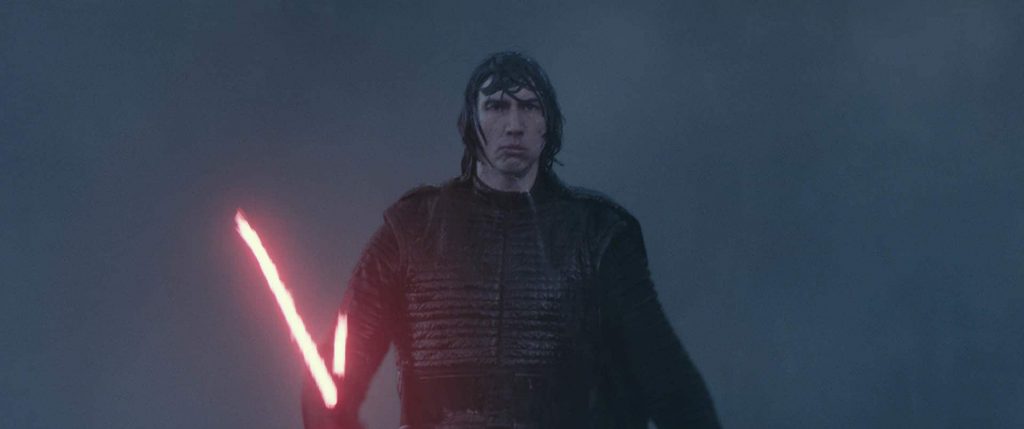
Missed Opportunity for a Timely Villain
In the months since Star Wars Celebration Chicago in April 2019, the filmmakers consistently included a talking point that The Rise of Skywalker would tell a “timely” story. In one sense, the movie fits this mold: a diverse group of heroes, led by women and people of color, topples a resurgent threat from the past bent on imposing a new tyranny. But when it comes to the central antagonist of the Sequel Trilogy, Kylo Ren, the movie misses its opportunity.
The vast majority of villains in Star Wars are not redeemed. Every single other villainous leader in the Sequel Trilogy is killed off rather than redeemed: Snoke, Phasma, Hux, Pryde, and Palpatine. The First Order and Final Order militaries are filled with child conscripts brainwashed to follow orders, yet the good guys constantly and indiscriminately kill them in large numbers, rather than rescuing or redeeming them. When Maryann Brandon describes the message of the film – “You can be bad and good can come into your life. And maybe if you’re open-minded to it, extraordinary things can change your mind.” – she is not describing the message for any villain except Kylo Ren, the man who freely, willingly, and repeatedly chose to carry out his evil deeds across three films (and six in-universe years of backstory before that). The war is won by defeating all of the other bad guys; it is only Kylo Ren who receives a dispensation for redemption.
In a stronger story with better writing, perhaps Kylo Ren’s redemption could have been earned. After ordering his mother’s death at the Battle of Crait, why does sensing her death suddenly change his heart? After being stalked across four worlds by a man who promises to turn her or kill her, why does Rey sensing Leia’s death suddenly make her spare his life and call him “Ben”? Instead, the redemption relies upon the sheer force of nostalgia: if his grandfather Darth Vader did it in Return of the Jedi, so can Kylo Ren in The Rise of Skywalker.
The timely story earned by the Sequel Trilogy was something different. Consistently across two-and-a-half films, Kylo Ren rejects each chance to choose good and instead chooses evil. Upon killing Snoke, he would have earned his place as the trilogy’s Big Bad. On the eve of The Rise of Skywalker’s release, Adam Driver confirmed that J.J. Abrams originally pitched the character to Driver as the inverted character arc of Darth Vader in the Original Trilogy: beginning conflicted between light and dark and ending confident and assured in the dark side. Instead of repeating the same ending as Darth Vader, a last-second return to the light, the story could have asked a timely and challenging question: what do the Jedi, the heroes, do about an adversary who does not want to find and reclaim their own sliver of good?
Kylo Ren is a white male villain, an inheritor of privilege and celebrity both in-universe and in the real world. Instead of a miraculous conversion reliant upon fondness for the character’s family and the actor’s portrayal, he could have been given another ending. The same one as Palpatine’s – the Big Bad who deserves comeuppance and demise, nothing more.
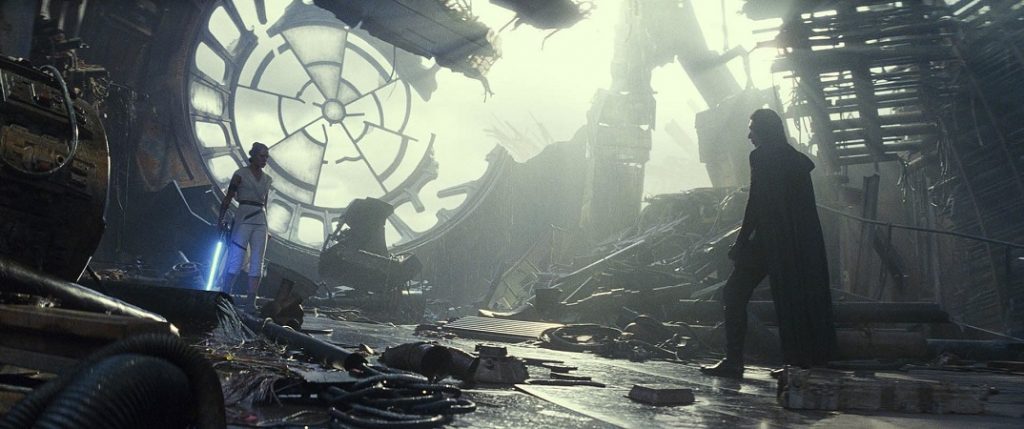
Serial Storytelling Without Payoff
Many of the other flaws in The Rise of Skywalker arise from its failure to tap into the potential available as a conclusion to long-running serial storytelling. Numerous famous and highly regarded stories are one-shot tales, of course, and they can be richly rewarding in their own right. By its nature, though, serial storytelling offers the possibility of different kinds of payoffs: character development over an extended period of time, plot threads weaved in and out, themes carried across multiple iterations, and so on. The Rise of Skywalker fails to take advantage of these possibilities to their fullest, leaving a lingering feeling of unfulfilled potential.
Of all the many Star Wars characters who appear in The Rise of Skywalker, only Rey has a fully developed character arc. The third movie in her trilogy moves Rey through the third phase of Joseph Campbell’s monomyth, completing her Hero’s Journey. Everyone else has, at most, character beats. After two movies with character development, Finn has no arc in this one: he is the same when the movie ends as when it begins. Poe has a moment of self-doubt after Leia’s death, but it quickly dissipates. Rose Tico is hardly present, but twice is involved in admonitions to be more optimistic. Lando and Zorri share the same beat: reluctance to join the fight in their initial scenes, followed by reemerging to aid the Resistance. General Hux briefly acts as a Resistance spy, due not to a change of heart or crisis of conscience but only to his spiteful vendetta that Kylo Ren must lose. More than sixty years after the siege of Naboo, Emperor Palpatine still craves galactic domination and ultimate power. Threepio, arguably, has the most interesting and impactful beat of any secondary character: facing his own mortality (of data and personality, if not physical body) and accepting the need for self-sacrifice to win the day. Even Kylo Ren has no arc of character development, but only flips a metaphysical switch and becomes Ben Solo once more. He does not apologize for his evil deeds, help defeat Palpatine, or take any action to dismantle or stand down the First Order – he makes a meaningful contribution only after Rey has already won, by trading his life for hers in the cosmic balance of the Force.
Another consistent talking point in the months between Celebration Chicago and the film’s release was that The Rise of Skywalker would conclude not only the Sequel Trilogy, but the nine-movie Skywalker Saga story. This, too, could have paid off themes and ideas from a lengthy serial story, but for the most part did not. After three movies in the Sequel Trilogy referencing Darth Vader as inspiration and motivation for Kylo Ren, neither his redemption nor the second defeat of Palpatine relies on connections to Anakin Skywalker. Likewise, Kylo Ren’s focus on his villainous grandfather is never counterbalanced with his heroic grandmother, Padmé Amidala. At the movie’s end, Rey Skywalker makes a pilgrimage to the place where Luke’s story began – but this is nostalgia only for Original Trilogy era fans. Thematically, the Skywalker Saga does not begin at the Lars homestead, or even at Shmi Skywalker’s hovel in Mos Espa – it begins on Naboo, the origin of both Palpatine and Padmé. Without the Trade Federation’s siege, the events that bring Padmé, Anakin, and Obi-Wan Kenobi together never occur, and the Skywalker Saga as we know it does not exist. But in The Rise of Skywalker, Naboo is nowhere to be found.
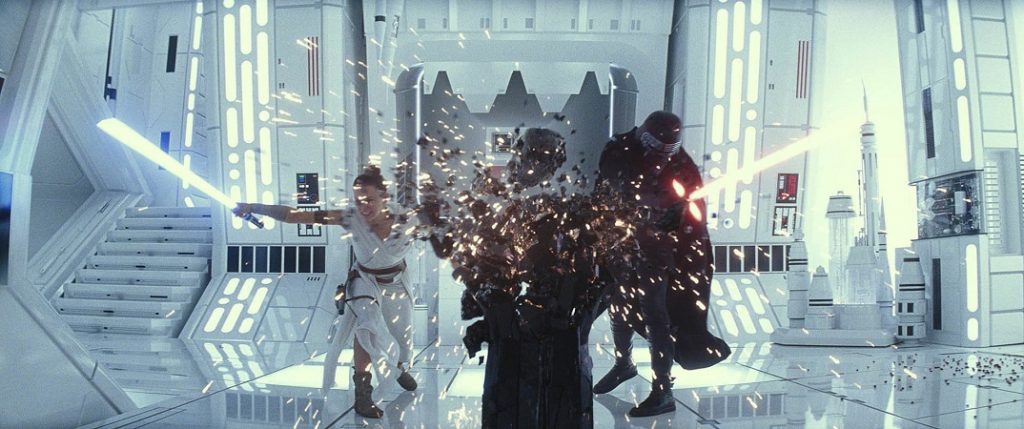
Over the long span of Star Wars serial storytelling, duality and dichotomies have pervaded the mythology, or perhaps theology, of the Force. Light and dark. Jedi and Sith. Selflessness and selfishness. Good and evil. After he finished the Prequel Trilogy, George Lucas’ deepest exploration of these ideas came in the Mortis arc of The Clone Wars animated series, three episodes in which Anakin, Obi-Wan, and Ahsoka Tano visit a strange spiritual realm. At Mortis they encounter three god-like beings representing aspects of the Force: Daughter the light side, Son the dark side, and Father as the keeper of the balance. Although the Mortis arc is in part a meditation on the prophecy of the Chosen One and its possible meanings, the episodes also emphasize the core aspects of the Force as envisioned by Lucas. In most of the Sequel Trilogy, Rey and Kylo Ren function as reflections, or refractions, of Daughter and Son. Protagonist and antagonist. Hero and villain. Woman and man. They are opposites, and rivals; “darkness rises, and light to meet it,” says Snoke. At times, the filmmakers have referenced the notion of “yin and yang” duality, as well; the mosaic of the Prime Jedi in the first temple on Ahch-To includes a similar color scheme. The Rise of Skywalker might have brought this theme to conclusion in a confrontation involving Rey, the avatar of light, and Kylo Ren, the avatar of dark, and the phantom menace Palpatine, a kind of inverted Evil Father who seeks not balance in the Force but its corruption into ultimate Sith power.
Instead, The Rise of Skywalker pivots away from this theme at the last moment, reframing Rey and Ren as a “dyad” in the Force. But this unique connection between them – Palpatine declares that such a bond has not been seen in thousands of years – did not arise organically in the Force, like Anakin’s immaculate conception to counterbalance the rise of the Sith. Instead, the bond was created by Palpatine himself as part of his plan to destroy the Skywalkers and pass his Sith inheritance to his granddaughter. With that twist, The Rise of Skywalker could have paid off the longstanding Star Wars theme that a selfish quest for dark power will never give you what you want, and will ultimately destroy you. But Palpatine is not defeated by Rey and Ren (or Ben) acting together as a dyad. Quite the opposite: faced with the dyad, he drains the enhanced quantum of life energy from both of them and ends up restored in body and more powerful than ever in the dark side of the Force – strong enough to incapacitate an entire Resistance fleet with dark lightning while leaving his own Sith fleet untouched. Rey defeats him, but not in tandem with the other half of the dyad: she rises after communing with the light side of the Force and the spirits of Jedi past, the legacy of all of the Jedi standing firm against the apex of all the Sith. Having won alone, Rey has no energy left; Ben Solo sacrifices himself to give his little remaining energy to her. The dyad does not prevail together, or survive together. In the end, it means nothing at all – except, perhaps, as a plot device to explain the special connection between Rey and Ren threaded through the three movies. Ironically, The Rise of Skywalker introduced a new pointless plot device when the existing lore and previous films – the serial storytelling that the movie concludes – had explained the dynamic between Rey and Ren well enough already.
The Rise of Skywalker creates other disconnects with the Skywalker Saga’s serial storytelling, as well. If Return of the Jedi did not result in the final defeat of the Empire, then why does The Rise of Skywalker indicate the final defeat of the First Order? If Emperor Palpatine cheated death at the end of Return of the Jedi, how does The Rise of Skywalker signify that he is truly dead and gone – for real – this time? If the incorporeal spirit of Luke Skywalker can use the Force in the physical realm to lift his sunken X-wing fighter from the sea, why does he not also project himself to Exegol and use the Force to assist Rey in her battle with Palpatine and his minions? If Rey, who read the ancient Jedi texts and trained briefly with Luke and Leia (who herself only trained briefly with Luke shortly after Return of the Jedi, when Luke had limited knowledge of the Jedi ways), can use the Force to heal an otherwise fatal lightsaber impalement to Kylo Ren’s abdomen, why didn’t Obi-Wan Kenobi, a fully trained Padawan under the tutelage of the Old Republic’s Jedi Order since early childhood, heal Qui-Gon Jinn in the Theed Palace generator facility in The Phantom Menace? When the end of the story includes an ability that would have turned the story in an entirely different direction at its very beginning, a failure of serial storytelling has occurred.
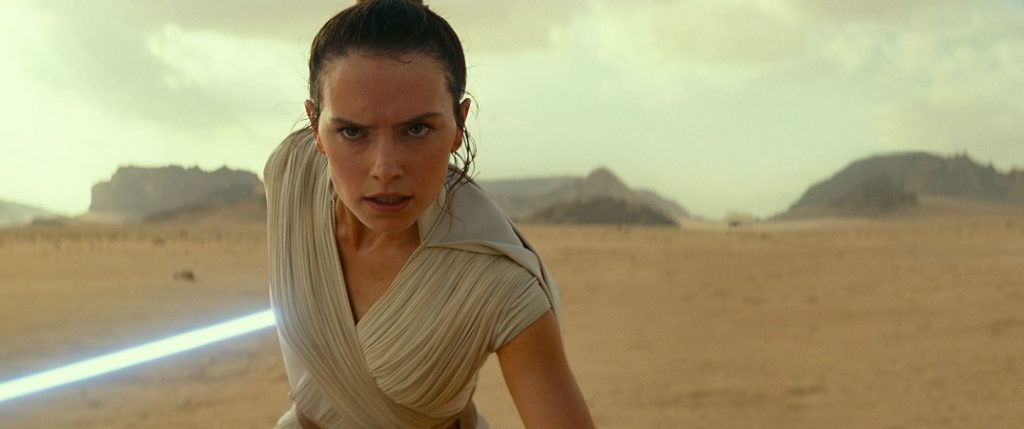
The Franchise and the Fandom After an Underwhelming Finale
This is not the first time Lucasfilm did not stick the landing on a long-term ongoing serial Star Wars story. More than forty novels published over almost fifteen years, from The New Jedi Order to Fate of the Jedi, reached an ignominious end shortly before the Legends announcement and story-continuity reboot. Some of the biggest mistakes made during that decline were repeated in the Sequel Trilogy: writers who found the “troubled” family-murdering dark-sider young man more interesting than the heroic young lady Jedi; excessive nostalgia for legacy characters, impeding the passing of the torch, while simultaneously deconstructing the legacy heroes instead of giving aspirational arcs to them; creators who listened to feedback from the fans praising the stories and ignored it from the fans critiquing them; franchise representatives ‘shipper-baiting segments of the fandom and inculcating unrealistic expectations for the direction of future storylines. When Disney purchased Lucasfilm for four billion dollars in 2012, it acquired an intellectual property on the decline, needing a reboot and refresh to regain its momentum as one of the most iconic franchises in the world. Perhaps The Rise of Skywalker will not turn out to be quite the disaster of Crucible, but the stakes are different, too: the Star Wars films have always carried an exponentially larger audience and financial share in the franchise than the ancillary stories like books and comics.
Where does Star Wars go from here? As this post is published, it is too soon to say. More time is needed to determine the extent of the dissatisfaction caused by The Rise of Skywalker. What is it ultimate box office performance, both U.S. domestic and internationally? Its impact on attendance at Star Wars: Galaxy’s Edge at Disney World and Disneyland? Its effect on the trajectory, already in decline previously, of sales of Star Wars toys and other merchandise? In the other direction, how much will The Rise of Skywalker be counterbalanced by positive reactions to The Mandalorian, the return of The Clone Wars, and other future non-theatrical Star Wars storytelling? How much excitement will be generated by announcements at Star Wars Celebration Anaheim in August 2020, including the next film currently scheduled for December 2022? Time will tell whether The Rise of Skywalker has a fate like DC’s Justice League movie, requiring a prompt and visible pivot, or something less drastic. But already one conclusion is clear: the Skywalker Saga did not end with the tremendous burst of enthusiasm, catharsis, and revenue that accompanied the MCU’s Avengers: Endgame, released eight months earlier. Once again, Star Wars finds itself climbing out of a hole of its own creation.
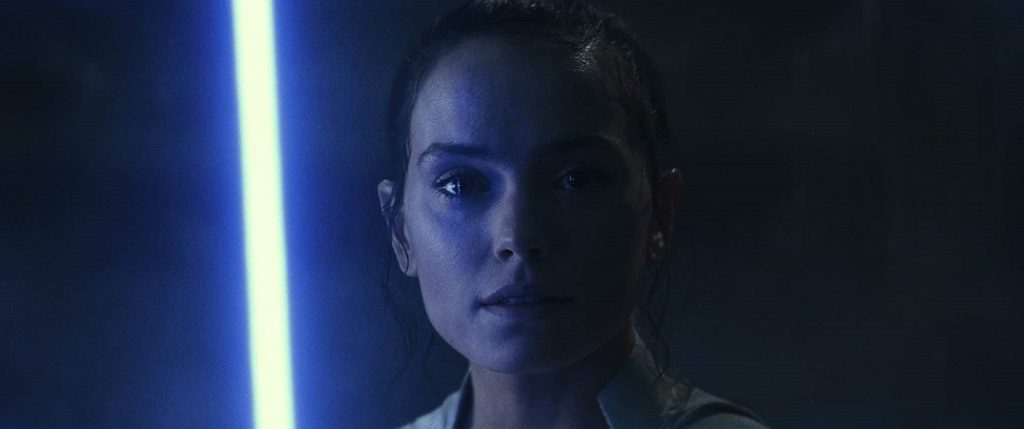
Related Links:
- Mastering Two Worlds: Concluding Rey’s Hero’s Journey in The Rise of Skywalker (Jan. 2020)
- Rey Deserved Better: The Failures of The Rise of Skywalker, Part 1 (Jan. 2020)
- Fridging Leia Organa: The Failures of The Rise of Skywalker, Part 2 (Jan. 2020)
- The Fates of Kylo Ren and Ben Solo: The Failures of The Rise of Skywalker, Part 3 (Jan. 2020)
- Finn’s Unfulfilled Potential: The Failures of The Rise of Skywalker, Part 4 (Jan. 2020)
- The End of the Skywalker Saga: The Failures of The Rise of Skywalker, Part 5 (Jan. 2020)
FANgirl Blog Analysis & Criticism of Sequel Trilogy:
- Rey’s Heroic Journey in The Force Awakens (Jan. 2016)
- Rey At Risk: Keeping Lucasfilm Accountable to Her Potential (Feb. 2016)
- Leia At Risk: Grief, Nostalgia, and Mythic Storytelling (Jan. 2017)
- Resurrecting Legends: Is the Star Wars Reboot Gendered? (Feb. 2017)
- Finn and the Hero’s Journey in The Force Awakens (July 2017)
- How J.J. Abrams Could Redeem Padmé in Episode IX (Sep. 2017)
- The Last Jedi’s Unexpected Star Wars Story Structure (Dec. 2017)
- Leia Organa: Leader of the New Jedi Order (Dec. 2017)
- The Problems With Rey Random: A Storytelling Analysis (Jan. 2018)
- The Last Jedi and the Hero’s Journey – Part One: Rey (Jan. 2018)
- The Last Jedi and the Hero’s Journey – Part Two: Finn (Jan. 2018)
- The Last Jedi and the Hero’s Journey – Part Three: Luke Skywalker and the Wizard’s Journey (Jan. 2018)
- The Last Jedi: Lessons Learned On Representing Women in Star Wars (Jan. 2018)
- Leia At Risk Revisited: The Stakes After The Last Jedi (Jan. 2018)
- The Last Jedi and the Hero’s Journey – Part Four: Kylo Ren and the Villain’s Journey (Feb. 2018)
- Skywalker At Risk: Serial Storytelling and Brand Value (Feb. 2018)
- Rey At Risk Revisited: The Danger Signs From The Last Jedi (Feb. 2018)
- The Shared Themes of Black Panther and The Last Jedi (Mar. 2018)
- Star Wars Themes in the Star Wars Rebels Finale and The Last Jedi (Apr. 2018)
- We’ve Been Here Before: Parallels in the Public Narrative on the State of Star Wars (June 2018)
- The State of Star Wars Storytelling: What Happens Next? (Jan. 2019)
- Comparing Two Fresh Starts: Captain Marvel and Star Wars (July 2019)
Other Links on The Rise of Skywalker:
- Rey’s revelation in ‘Rise of Skywalker’ changes Star Wars for the worse (Chris Taylor, Mashable; Dec. 20, 2019)
- ‘Rise of Skywalker’ made Kylo Ren the most exhausting man in the galaxy (Chris Taylor, Mashable; Dec. 24, 2019)
- ‘The Rise of Skywalker’ failed to care about Finn’s story. That’s a problem. (Chris Taylor, Mashable; Dec. 25, 2019)
- Why Harrison Ford Returned to Star Wars One Last Time (Anthony Breznican, Vanity Fair; Dec. 30, 2019)
- The Guardians of Leia (Anthony Breznican, Vanity Fair; Dec. 30, 2019)
- Star Wars Writer Says Rise of Skywalker Does Not Undo The Last Jedi (Laura Bradley, Vanity Fair; Dec. 30, 2019)
- ‘Star Wars’ Writer Chris Terrio Says ‘The Rise of Skywalker’ Doesn’t Undo ‘The Last Jedi’ (Brian Welk, The Wrap; Dec. 30, 2019)
- ‘Star Wars’ Co-Writer Chris Terrio Sets Record Straight on Perceived ‘Last Jedi’ Jabs (Brian Davids, The Hollywood Reporter; Dec. 30, 2019)
- ‘Star Wars’ Writer Chris Terrio on Rey’s Parentage, the Big Villain, and That Final Scene — Spoilers (Kate Erbland, IndieWire; Dec. 30, 2019)
- ‘Star Wars’ Star Kelly Marie Tran on the Challenge of Shooting Leia’s Scenes (Brian Davids, The Hollywood Reporter; Dec. 31, 2019)
- ‘Rise of Skywalker’ Editor Says ‘Star Wars’ Was In A “No-Win Situation” With Fans In This Final Chapter (Charles Barfield, The Playlist; Dec. 31, 2019)
- ‘Star Wars: The Rise Of Skywalker’ Editor Reveals Answers To Major Mysteries (Bill Bradley, Huffington Post; Jan. 2, 2020)
- The Rise of Skywalker leaves the Jedi in a state of confusion (Siddhant Adlakha, Polygon; Jan. 7, 2020)
- BJ Priester Talks The Acolyte Episode 6 on Who’s the Bossk? - July 7, 2024
- Dave Filoni Talks Writing AHSOKA and Guiding the Future of Star Wars Storytelling - June 21, 2024
- Lessons in Franchise Management – MCU: The Reign of Marvel Studios - January 14, 2024

